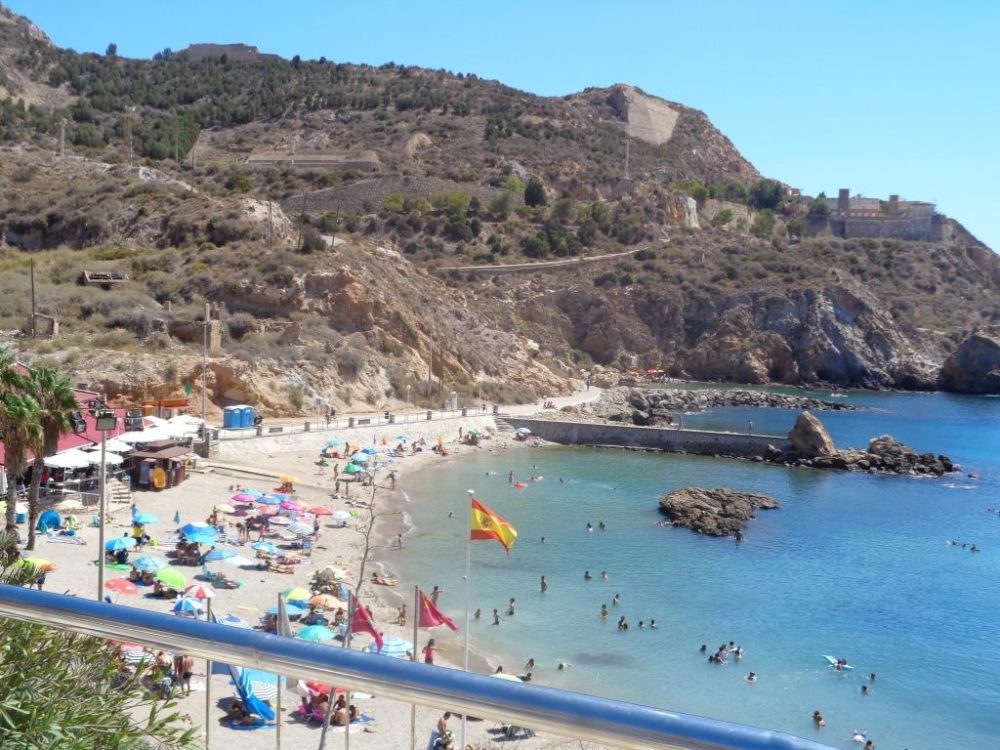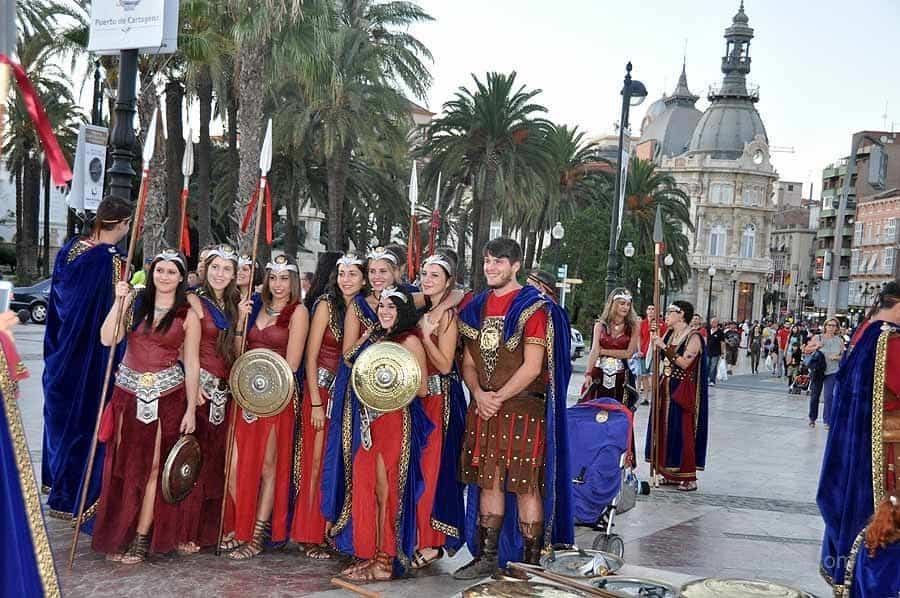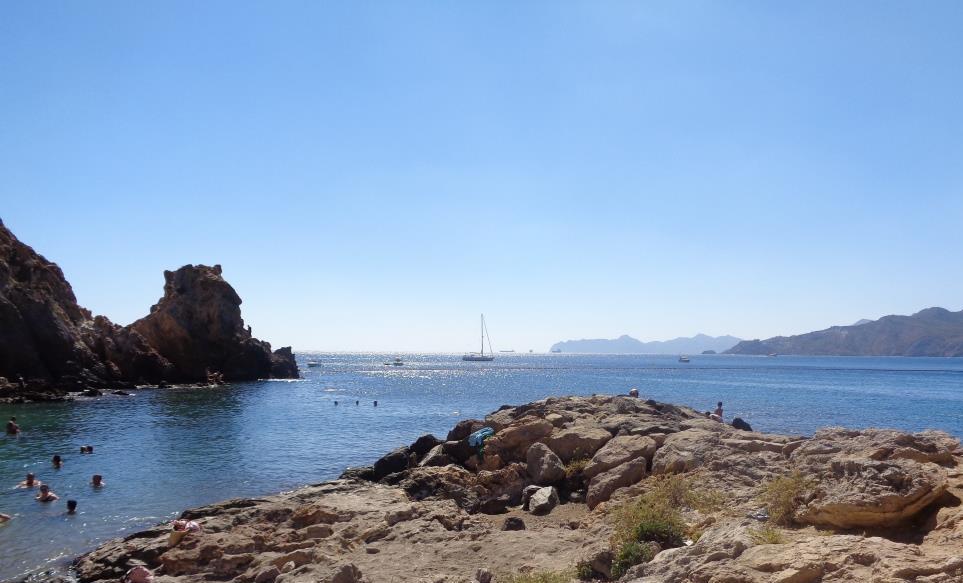Cartagena as of January 2018, it has a population of 213,943 inhabitants being the region’s second-largest municipality and the country’s sixth-largest non-provincial-capital city. The ancient harbour city of Cartagena is located on five small hills called: Monte de la Concepción, Cerro del Molinete, Monte de San José, Monte Sacro and Cerro de Despeñaperros. It is open to the Mediterranean Sea through a wide bay and is the third deepest port in the world.

Cartagena has been inhabited for over two millennia, being founded around 227 BC by the Carthaginians, and name means ´new town´ after the original city of Carthage. The city had its heyday during the Roman Empire, when it was known as Carthago Nova (the New Carthage) and has also been under Arabic rule during its long history
Much of the historical weight of Cartagena in the past goes to its coveted defensive port, one of the most important in the western Mediterranean. Cartagena has been the capital of the Spanish Navy since the 1800´s. It is still an important naval seaport, the main military haven of Spain, and is home to a large naval shipyard.

A number of landmarks such as the Roman Theatre, the second largest of the Iberian Peninsula , an abundance of Phoenician, Roman, Byzantine and Moorish remains, and a plethora of Art Nouveau buildings, a result of the bourgeoisie from the early 20th century. Cartagena is now established as a major cruise ship destination in the Mediterranean and an emerging cultural focus. It was the first of a number of cities that have been named Cartagena, most notably Cartagena, Colombia.

Easter Parades -Cartagena
Easter in Cartagena, declared of International Tourist Interest in 2005, is the Local Festival par excellence. It is the longest week of the year, there are ten days of processions that extend from Friday of Dolores to Easter Sunday.
The Cartagena processionists are grouped into four brotherhoods:
Illustrious Brotherhood of the Santísimo and Real Cristo del Socorro , which processions the Friday morning of Dolores opening the Holy Week processions throughout Spain. Its distinctive color is black.
Pontifical, Royal and Illustrious Brotherhood of Our Father Jesus in the Sorrowful Step of the Arrest and Hope of the Salvation of Souls (CALIFORNIOS)Their departure in procession is made on Dolores Friday, Palm Sunday, Tuesday, Wednesday and Holy Thursday. The color that distinguishes them is red.
Royal and Illustrious Brotherhood of Nuestro Padre Jesús Nazareno (MARRAJOS) , the days that parade are on Holy Monday, Good Friday (Early Morning and Night) and Holy Saturday. Distinctive color purple
Royal and Illustrious Brotherhood of Our Father Jesus Risen (RESUCITADOS) , parades on Easter Sunday, closing ten days of processions. The distinctive color is white.

ROMAN & CARTHAGINIANS Fiesta
This re-enactment of the battles between the Romans and the Carthaginians is well worth seeing, as it has been declared as being of National Tourist Interest. Each day during the fiesta various parts of this story are re-enacted, so you’ll need to visit everyday to get the whole story or return every year on a different day!! The acts for the fiesta take place in two main locations; one at the port and the other at the football ground. The ‘Festival Camp’ is located in the football stadium and is a great place to visit as there is lots going on. It is the site for some of the re-enactments and the headquarters for each association, the location of the artesian and craft market and the place to enjoy locally produced traditional food and drink! The port is the site for many of the battles, including the big one when the Romans arrive by boat and take control of the city.

Aswell as all the attractions of the city just along the coast you can visit its two protected areas: to the west, the beaches of Cabo Tiñoso, among which is the beach of El Portús and to the east the beaches that are located in the regional park of Calblanque and Cala Reona.

Nearby is also La Manga del Mar Menor is a sandy formation, of the barrier island type forming a natural lagoon. La Manga starts from Cabo de Palos, a fishing and tourist town, in which the Lighthouse that was built in 1864 overlooks the coastline
The diverse coastline around Cartagena has made it one of the favourite destinations for the scuba diving in Spain. Places such as the marine reserves of Cabo de Palos and Islas Hormigas, or the marine reserve of fishing interest of Cabo Tiñoso There are also wrecks to ships sunk during the Civil War to explore.
In the surroundings of the Cartagena countryside where Tara Casa is located we are surrounded by farming, fields of almonds and hundreds of preserved windmills from times gone by.
Useful Links
Maps
Easter in Cartagena. Step by Step
Walking Trails near Tara Casa
Beach of Portús-Campillo de Adentro-La Azohía
Blue Trail Port of Cartagena

